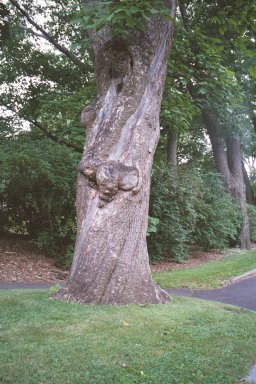| (This is the fourth in a series of pieces chronicling
my trip to Massachusetts and Vermont. It was written and posted after August
14 but dated the day it refers to. Subsequent pieces through August 11
will follow the same pattern.)
July 27, 2002
Saturday
The first, "Two by Two by Dickinson," was led by mezzo-soprano Virginia Dupuy, a concert and recording artist who also teaches at Southern Methodist University. For the past six years she has made a project of collecting and studying musical settings of Dickinson's poems. She presented several texts in two or more different settings, singing them after someone had read them, and then commenting on them, or inviting comment from the actual composer who was also in attendance. After that I went to a session given by Amherst composer Sean Vernon. His style is more "folky" than the formal art song. He led us through the evolution of one of his ED settings from conception to recorded version. The process of taking an idea expressed in one art form and reinterpreting it in another is called ekphrasis. Most often it is a painting or other nonverbal work that gives rise to a poem. Keats's "Ode on a Grecian Urn" is an example. Sometimes the poem exists first. Charles DeMuth's painting I Saw the Figure 5 in Gold is his interpretation of his friend William Carlos Williams's poem of the same name. Although critic Etienne Souriau calls this "second-hand inspiration," it has given rise to many fine works, most of which can be appreciated on their own without any knowledge of the original piece. In the case of Dickinson, debate about her meaning and intention fuels the study of her, and in a song setting her often enigmatic words are still there. It was fascinating to hear the variations in tempo and emphasis that different composers gave to the same text. It was also fascinating, and not a little intimidating, to be in the presence of so much highly developed creative talent. The composers, the performers, the accompanists, the readers all have multiple degrees and lengthy résumés. And yet I had the same experience I had in 1999. These people were extraordinarily approachable, and very generous with themselves as they answered questions and explained their process. They take their work seriously, and they take me seriously.
Because of the sheer volume of material to choose from, any program of Emily Dickinson song settings will be long. This concert, held in Grace Episcopal Church on the Amherst Common, was more than two hours. The Common was also host that night to an ecological awareness street festival that included some energetic rock-type bands. The result was that some of the ED song settings, particularly in the first half of the concert, were punctuated by some booming bass that penetrated the stone walls of the church. I'd had a full day. I was nearing the end of the first part of my trip, ready to wrap things up in Amherst and head for Boston. |
 I
had lunch with friends and then decided not to attend the afternoon's master
vocal class. I'd become attracted to a large catalpa tree (left) outside
the Alumni House at Amherst. I took my camera and my drawing materials
(and what I'd learned in six Tuesday night lessons begun in June) and sat
with the tree for several hours. I photographed it from all angles, made
sketches, and did some writing. Spending the time this way was a good choice.
It left me refreshed for the evening's concert.
I
had lunch with friends and then decided not to attend the afternoon's master
vocal class. I'd become attracted to a large catalpa tree (left) outside
the Alumni House at Amherst. I took my camera and my drawing materials
(and what I'd learned in six Tuesday night lessons begun in June) and sat
with the tree for several hours. I photographed it from all angles, made
sketches, and did some writing. Spending the time this way was a good choice.
It left me refreshed for the evening's concert.